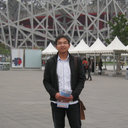[Effects of Baidanhuang lavage fluid nasal irrigation on the postoperative patients with chronic rhinosinusitis with nasal polyps].
Märksõnad
Abstraktne
OBJECTIVE
To observe the clinical efficacy of Baidanhuang lavage fluid nasal irrigation (BLFNI) on postoperative patients with chronic sinusitis with nasal polyps (CRwNP).
METHODS
Ninety postoperative patients with CRwNP were randomly assigned to two groups, the treatment group (60 cases) and the control group (30 cases). After nasal endoscopic surgery, all patients received routine therapies, while the nasal cavity perfusion device was used to irrigate. Patients in the treatment group were treated with BLFNI, while those in the control group were irrigated with physiologic saline with dexamethasone and gentamycin. The physic liquor was maintained in the nasal cavity for 15 min, 14 days as one therapeutic course: once per 3 days in first treatment course; once per 5 days in the second treatment course; once per 7 days in the third treatment course. The irrigation times gradually reduced as time went by. The VAS scoring was performed in four clinical symptoms, such as nasal obstruction, rhinorrhea, olfaction disorders, discomforts or pain in the face or head. The Lund-Kenenedy quantification scoring method was used for nasal endoscopy to assess the polyps size, mucous membrane, scar, surface scab, and quality of life (QOL). The SNOT-20 rating scales were filled to investigate the QOL. All the assessments were carried out before surgery, 1.5, 3, and 6 months, respectively. The comprehensive efficacy assessment was conducted 1 year later.
RESULTS
The 1-year cure rate was 79.25% in the treatment group and 76.92% in the control group, and the total effective rate was 90.57% in the treatment group and 84.62% in the control group. There was no statistical difference between the two groups (P > 0.05). The nasal cavity cleaning time and the epithelization time was (2.15 +/- 0.13) weeks and (9.17 +/- 1.67) weeks respectively in the treatment group, earlier than those in the control group [(2.65 +/- 0.15) weeks and (10.71 +/- 3.12) weeks, P < 0.05]. At week eight 22 patients in the treatment group ended the lavage due to recovery, while 5 patients in the control group ended the lavage, showing statistical difference (P < 0.05). Compared with the control group, better results were obtained in the treatment group in relieving the total VAS score at postoperative 6 weeks and 3 months, in the single score of symptoms at 3 months after operation, the rhinorrhea at postoperative 6 months and 1 year (P < 0.05). The total endoscopic score, and the single score for nasal mucous membrane edema, and nasal secretion at postoperative 1.5 month were lower in the treatment group than in the control group (P < 0.05). The total score of SNOT-20 questionnaire, and the integrals for five major indicators at postoperative 1.5 and 3 months were lower in the treatment group than in the control group (P < 0.05).
CONCLUSIONS
The perioperative application of BLFNI could alleviate postoperative mucosal inflammation, shorten the cavity cleaning time, speed up the process of epithelization, improve the QOL, and elevate the operative efficacy. Its therapeutic roles were more prominent within perioperative 1.5-3 months.



